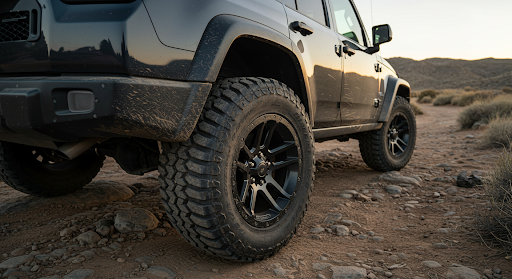
Design Changes
 |
| Ed Welburn looks at GM design from the top. |
Automotive Industries recently participated in a brief Q&A with Mr. Welburn as part of a small group of reporters:
Q: What are your feelings about this challenging new assignment?
A: It’s a very exciting time at GM Design, a time when we have the full commitment of the leadership of the company. There is so much going on among all our studios worldwide. As Design VP for North America, I also chair GM’s Global Design Council representing facilities in Germany, Sweden, Brazil, China and Korea. We have VR [virtual reality] studios in each and can have global brainstorming and collaboration through live VR reviews, as if everyone is in the same room viewing a design and discussing it real time. We have brought these design centers closer together, and I’m determined to have more movement of designers and sculptors to enhance everyone’s understanding of what is going on in all markets.
Q: Describe your design philosophy?
A: Most important is that each brand needs its own very clear identity, especially as we become more global and the market becomes more crowded. Number one is building strong, well differentiated brands. Number two is having a clear vision of each brand’s character that is common between design and engineering. We’ll have great debates, but it’s important to get together. If you share a common vision, if that vision is clear up front, you can move very fast and designs come together very quickly. Developing multiple themes up front is also important so that everyone can agree on a direction and execute it.
Q: Compare today with past eras when GM was America’s undisputed design leader?
A: One thing common then and now is the passion, the emotion people have with their automobiles. It was there even in the ’80s and ’90s, but we weren’t sure how to connect with our customers.
Q: What about the negative image many people have of “Detroit” design?
A: A lot of that is based on experiences people have had in previous years with both design and quality, and [changing that image] is not an easy job. But I think it’s changing. I do find that when people drive our products, they tend to feel a lot more positive about them.
Q: Three GM brands – Buick, Pontiac and Saturn — are struggling.
A: We just had a review of future products for those brands, and I am very excited about them. These are very strong designs, and I feel good about those brands in particular, as well as the others.
Q: The Cadillac design renaissance seems to be progressing well. Is Buick next?
A: There was a very clear vision for Cadillac, and everyone got on board. The one for Buick…we’ve got designers now that will walk up to those [models] and say, “Man, I’m going to be buying a Buick.” They get emotional about them, which is great! When you see the Buick concept design that’s coming next year, pay attention…it will be a significant statement.
Q: Toyota and others make a lot of money selling “vanilla.” Is there a place for boring and bland in Ed Welburn’s portfolio?
A: No, we will not be doing bland, but some will be more subtle and quiet. “Gotta have” does not have to be over the top. An easy-to-love vehicle can also be a “gotta have.” People can feel very passionate about a more quiet, subtle design.
Q: What is the working relationship between you and Mr. Lutz?
A: We connect quite well. He may be more outgoing, but we both have a real passion for vehicles of all kinds, new and old. Bob and I, in many ways, are quite different, but some of our likes and dislikes in design are very similar. We can look across a Board table and have a great conversation just through eye contact.
Q: What have been some your most satisfying projects?
A: I’ve worked on a variety of projects…on one end off the studio, working on the SSR, on the other end working on AUTOnomy and Hy- Wire. The Olds Aerotech is one that moved very quickly. Nothing made me happier than the day when A.J. Foyt first drove that vehicle. We had lots of wing and spoiler options to try [if the basic shape didn’t work], but he did a 256-mph lap and close to 300 mph on the straight, right “out of the box” with no aero add-ons. During development of that vehicle, A.J. teased me about my “Detroit shoes.” After setting the record, he went to his transporter and came back with a pair of Tony Lama ostrich skin boots. He said, “Here, I don’t want to see you ever wearing those Detroit shoes again.” I still have those boots, and I love them.
Q: Given the awesome importance of your responsibilities to the corporation’s health and future, do you sleep well at night?
A: I sleep well. Not as many hours as before, but well.









More Stories
Best Wheel Size for Off-Road Adventures: What People Get Wrong
Trusted Auto Collision Repair That Restores Both Performance and Peace of Mind
What You Need to Know About Tire Pressure in Winter vs Summer